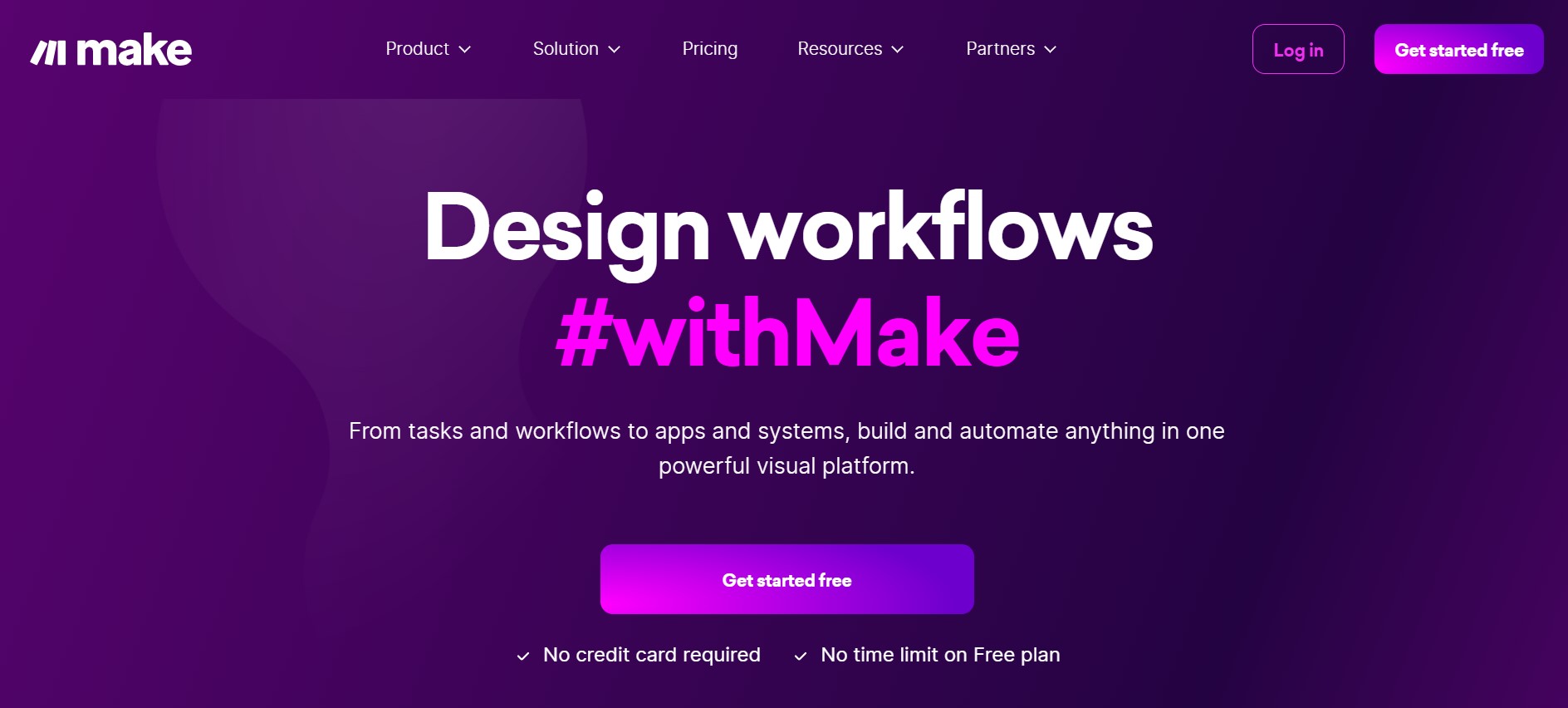
As we all know, search engine optimization (SEO) plays a critical role in driving organic traffic to websites.
As businesses strive to stay ahead of the competition, programmatic SEO gives marketers the ability to create optimized web pages at scale, leveraging existing data and pre-programmed rules.
In this article, we will explore the fundamentals of programmatic SEO, discuss its benefits, and guide you on how to create pages following this approach to search engine optimization.
What is Programmatic SEO?
Programmatic SEO is an approach to search engine optimization that streamlines and automates the process of creating optimized web pages at scale.
It involves using pre-defined rules and data-driven insights to dynamically generate and update web pages with the aim of improving organic search visibility.
Example of Programmatic SEO
Here is an example of programmatic SEO in action:
TripAdvisor, a global travel giant, is another company that has embraced programmatic SEO to dominate local search results and drive massive traffic to their platform.

While managing millions of hotel listings, restaurants, and other content pages would be a daunting task with traditional SEO methods, TripAdvisor utilizes programmatic SEO to create a seamless experience for travelers seeking more information for specific travel destinations.
Here's how they achieve it:
- Comprehensive Data Collection: TripAdvisor amasses extensive data on travel destinations, including hotels, flights, things to do, prices, availability, and user reviews.
- Dynamic Template Generation: They employ templates that flexibly integrate this data, constructing unique pages for every destination in their database.
- Local Search Optimization: These pages are optimized for location-specific keywords and phrases such as “best things to do in Seoul”, ensuring visibility when travelers search for things to do in a particular city or region.
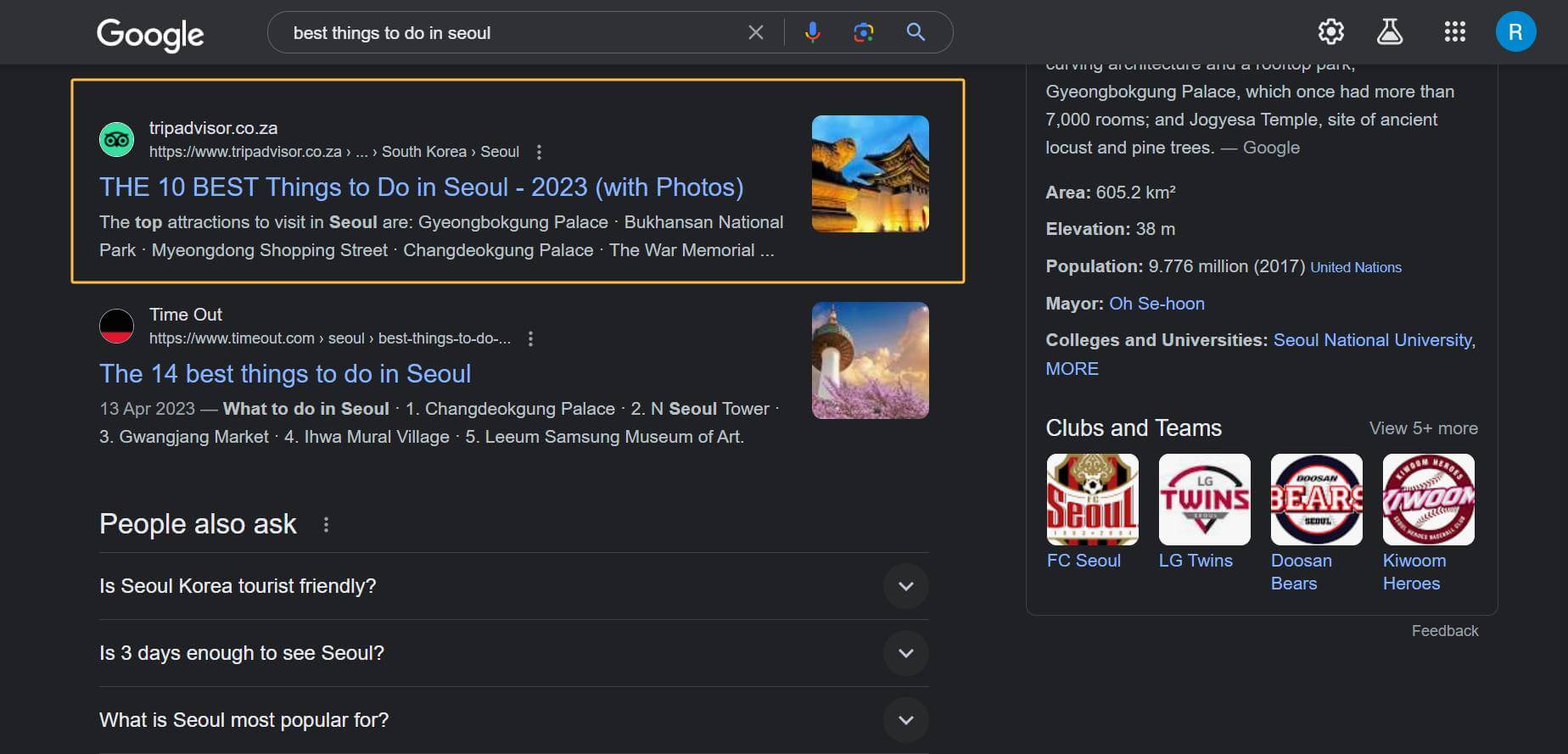
The outcomes are significant:
- Global Reach and Local Relevance: TripAdvisor's programmatic SEO strategy allows them to maintain a global presence while catering to local search needs, effectively capturing travelers at every stage of their journey.
- Enhanced User Experience: Travelers can easily find and compare hotels in their desired destinations, with tailored content that matches their search intent.
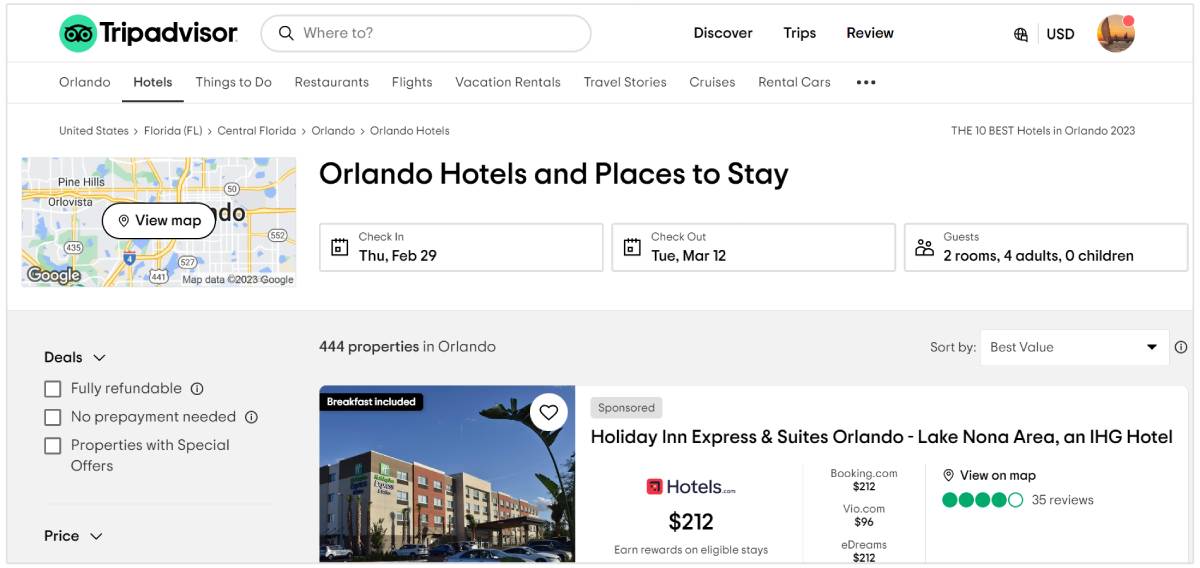
- Increased Bookings and Revenue: By providing a seamless local search experience, TripAdvisor drives more bookings and generates significant revenue.
This example highlights the power of programmatic SEO for businesses with extensive product or service listings.
By automating page creation and local search optimization, they ensure widespread visibility and a personalized user experience, ultimately boosting conversions and business growth.
Traditional SEO vs Programmatic SEO: What's the Difference?
When it comes to optimizing your website for search engines, two primary approaches stand out: traditional SEO and programmatic SEO.
But what are the differences between the two?
Traditional SEO involves manual optimization of individual web pages, whereas programmatic SEO automates and streamlines the process.
Traditional SEO relies on keyword research, content production, and backlinking to improve search visibility, while programmatic SEO utilizes data insights and pre-programmed rules to generate optimized pages at scale.
Additionally, traditional SEO tends to be a long-term process with results taking time to materialize, while programmatic SEO can yield quicker outcomes due to its automation and scalability.
The Benefits of Programmatic SEO
Programmatic SEO offers several benefits that make it a valuable approach for businesses looking to boost their online presence.
Some of these include:
- Improved Efficiency: By automating the process, programmatic SEO reduces the time and resources needed to optimize web pages, resulting in improved efficiency and productivity.
- Scalability: As businesses grow and expand their product or service offerings, programmatic SEO allows for easy scaling without compromising on quality or performance.
- Data-Driven Insights: With programmatic SEO, data is at the core of decision-making. By leveraging data insights, marketers can make more informed decisions about which web pages to optimize and how to optimize them for maximum impact.
- Quick Results: As mentioned earlier, programmatic SEO can yield quicker results compared to traditional SEO methods, making it an excellent approach for businesses looking for immediate impact and results.
Drawbacks to Programmatic SEO
While the efficiency and scalability of programmatic SEO are undeniable, it's not without its challenges.
Before venturing into this automated process, consider these potential drawbacks:
- Quality over Quantity: The rapid generation of content can inadvertently lead to thin content, lacking depth and value for users. Google frowns upon such pages, potentially penalizing your website. Striking a balance between automation and manual quality control is crucial.
- Duplicate Content Trap: Algorithmic content creation can unintentionally generate duplicate content, even across your own website. This can confuse search engines and negatively impact your ranking. Implementing safeguards like plagiarism checks and topic clustering is essential.
- Keyword Cannibalization: Targeting similar keywords with multiple programmatically generated pages can lead to keyword cannibalization, where pages compete with each other for ranking. Careful keyword selection and strategic page optimization are necessary to avoid this pitfall.
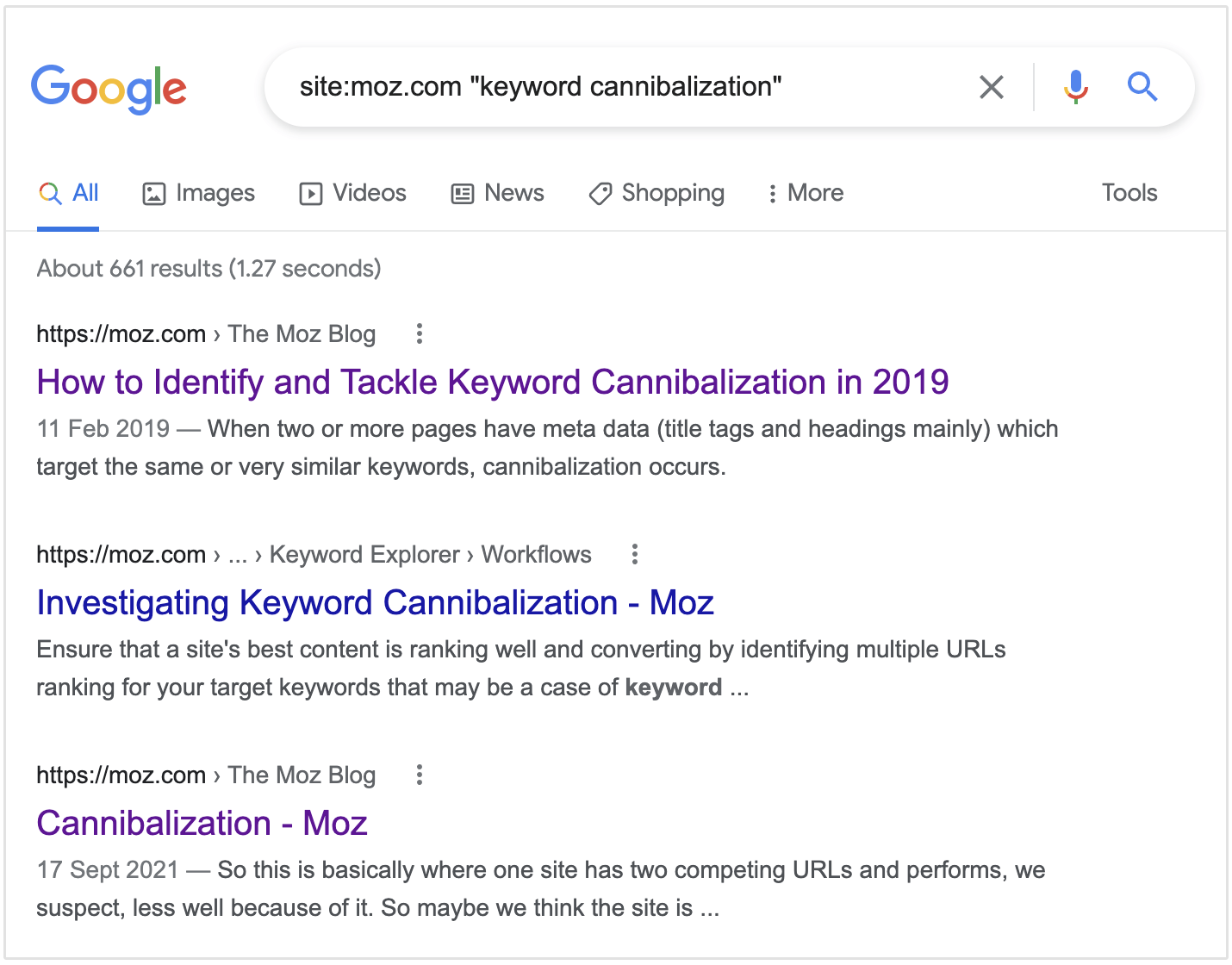
- Over Reliance on Automation: While automation simplifies processes, relying solely on algorithms can overlook valuable SEO nuances. Ignoring technical SEO aspects like site structure and internal linking can hinder visibility even with well-optimized content.
- Data Dependency: Programmatic SEO thrives on accurate and relevant data. Poor data quality can lead to misleading keyword targeting and ineffective content generation, undermining your SEO efforts. Investing in reliable data sources and data cleansing is crucial.
- Lack of Personalization: Automated content, while efficient, may lack the personal touch appreciated by users. Engaging storytelling and unique insights are still valuable differentiators that manual content creation can provide.
Remember, programmatic SEO is a powerful tool, not a magic bullet.
Understanding its limitations and addressing them proactively will help you reap the benefits of automation while avoiding potential pitfalls.
By combining its power with strategic manual intervention and careful quality control, you can unlock the full potential of this dynamic SEO approach.
How to Create Pages Using Programmatic SEO
Now that you know what programmatic SEO is and how it can benefit your website, let's take a deep dive into how to create pages using this approach.
Create a Page Template
To leverage the power of programmatic SEO effectively, you need to start by creating a landing page template that serves as a foundation for your automated page creation.
This template acts as a blueprint for generating consistent, SEO-optimized pages.
Here's how you can go about creating this landing page template:
1. Define Your Goals and Audience
Before launching into template creation, understand your core objectives. Are you aiming for conversions, brand awareness, or lead generation? Who are you trying to reach?
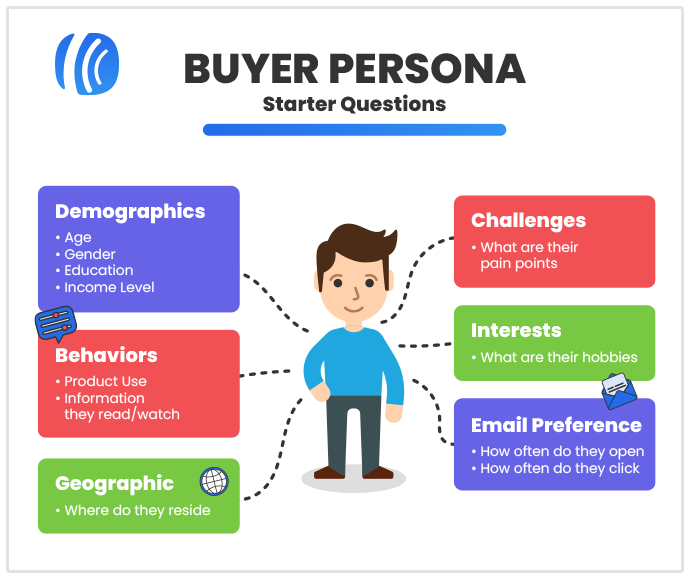
Image source: AWeber
Once you have a clear roadmap, you can tailor your template to resonate with your target audience and achieve your desired outcomes.
2. Gather Inspiration
Don't reinvent the wheel! Analyze your competitors' pages or look at some landing page examples and identify successful elements.
Look for clear value propositions, their page headlines, layouts, and effective CTAs. Borrow inspiration, but remember to add your own unique brand voice and personality.
3. Choose Your Tools
A plethora of tools can help build your template.
WordPress plugins like WP All Import or website builders like Webflow offer user-friendly drag-and-drop interfaces to create and manage reusable templates.

Consider your technical expertise and desired level of customization when choosing your tool.
An alternative is to hire a web developer to help you build this landing page template.
4. Craft the Basic Blueprint
Start with the foundational elements your template needs:
- Header: Showcase your brand logo and navigation options.
- Hero Section: Grab attention with a captivating headline, value proposition, and visuals.
- Content Body: Build trust and credibility with informative, user-friendly content tailored to your target audience and keywords.
- Call to Action: Prompt users to take the desired action, whether it's subscribing, learning more, or purchasing.
- Footer: Provide additional information like contact details and legal agreements.
5. Embrace Dynamic Elements
Programmatic SEO thrives on dynamism.
Use placeholders or custom fields wherever you want different content to be injected based on your keywords and data. This could include headlines, product descriptions, images, or even entire sections of the page.
6. Focus on User Experience
Remember, even with automation, good UX is paramount.
Ensure your template is visually appealing, easy to navigate, and mobile-friendly. Users should find it intuitive and engaging, regardless of which keywords triggered the page creation.
7. Test and Refine
No template is perfect. Continuously test and refine your creation. Analyze user behavior, track conversions, and gather feedback.
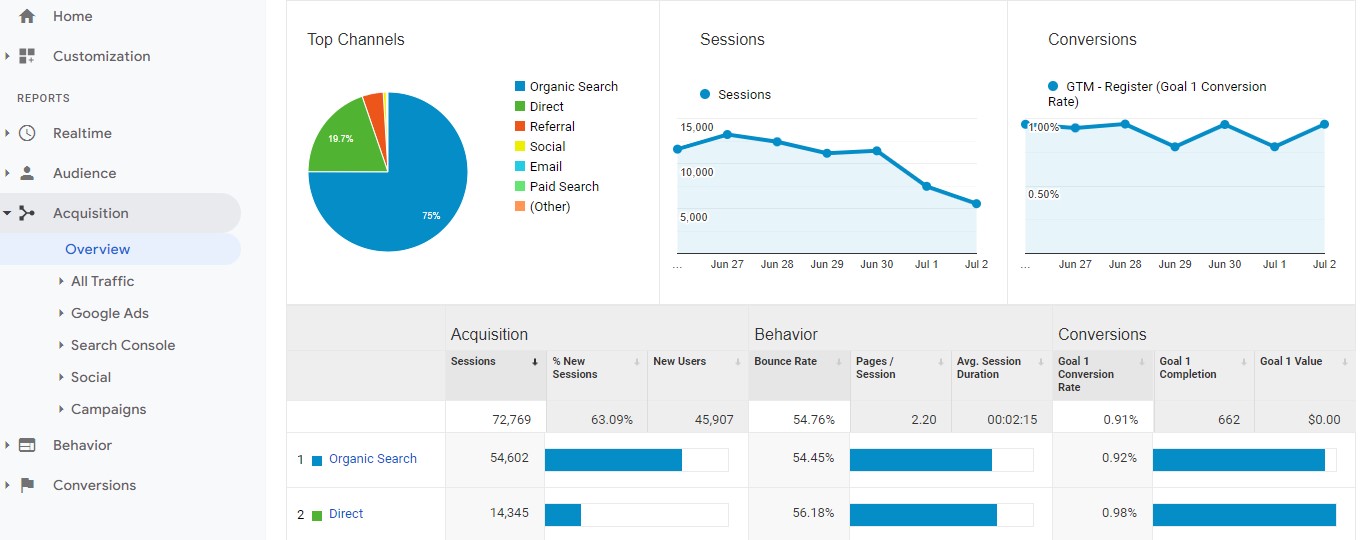
Adapt your template based on your findings to ensure it stays optimized for both search engines and users.
By following these steps and adding your creative flair, you can build a robust and flexible landing page template that fuels your programmatic SEO engine to reach new heights of visibility and success.
Remember, the perfect template is a constantly evolving entity, growing and adapting with your SEO goals and audience engagement.
Keyword Research for Programmatic SEO
To kickstart your programmatic SEO strategy and generate content ideas, conducting keyword research is essential.
Keyword research helps you identify the terms and phrases that your target audience is searching for, enabling you to optimize your pages effectively.
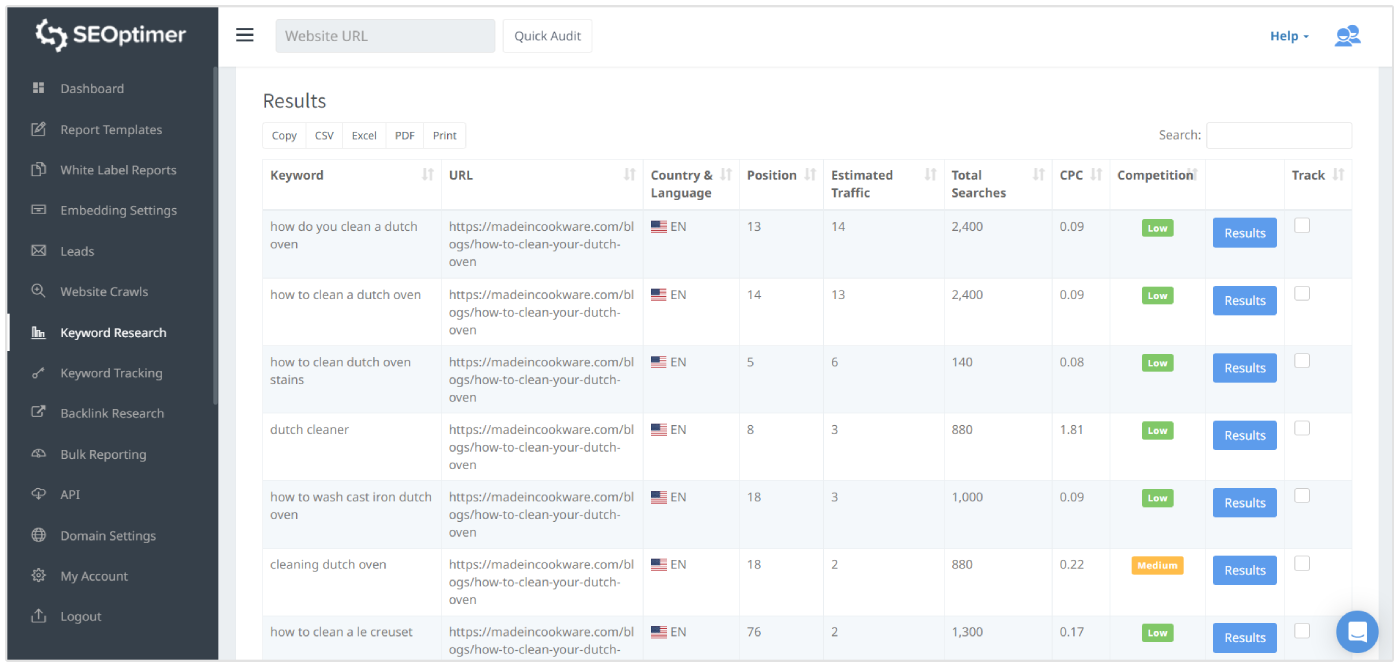
When performing keyword research, it's crucial to understand the concept of head terms and modifiers, which form the basis of long tail keywords.
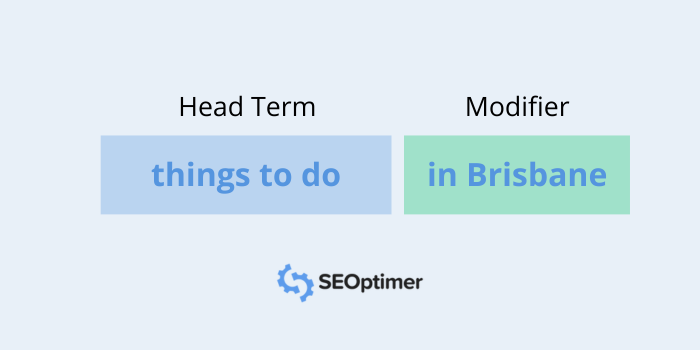
Here's an overview:
- Head Terms: Head terms are short, broad keywords that typically consist of one or two words. They are highly competitive and have high search volumes. Examples of head terms include "shoes," "digital marketing," or "travel destinations." While targeting head terms can bring significant traffic, it's challenging to rank for them due to intense competition.
- Modifiers: Modifiers are words or phrases that are added to head terms to create more specific and long tail keywords. These modifiers help refine search intent and target a narrower audience. Examples of modifiers include "best," "top," "affordable," "guide," "review," "2023," and "near me." By adding modifiers to head terms, you can find less competitive keywords that still attract relevant traffic.
By combining head terms with modifiers, you create long tail keywords that align with the goals of programmatic SEO.
Long tail keywords are more specific, have lower search volumes, but often indicate higher purchase intent and conversion potential.
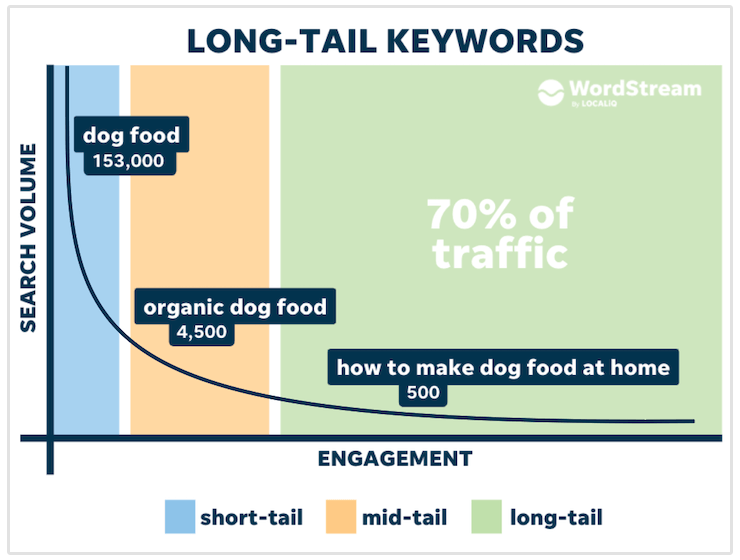
For example:
Head Term: "Shoes"
Long Tail Keywords: "Best running shoes for women," "Affordable men's leather shoes," "Comfortable sneakers for kids"
Head Term: "Digital Marketing"
Long Tail Keywords: "Content marketing strategies for startups," "Social media advertising tips for small businesses," "SEO trends in 2023"
Head Term: "Travel Destinations"
Long Tail Keywords: "Family-friendly vacation spots in Europe," "Budget-friendly honeymoon destinations in Asia," "Off-the-beaten-path travel destinations in South America"
Programmatic SEO aims to generate and optimize pages for these long tail keywords, enabling you to capture more targeted traffic and potentially increase conversions.
Remember, thorough keyword research is crucial to uncovering relevant content ideas and understanding the search intent of your target audience. It allows you to align your programmatic SEO efforts with the specific queries and interests of potential customers.
Understand Search Intent
Understanding the search intent behind the keywords you found is crucial for creating relevant and effective content using programmatic SEO.
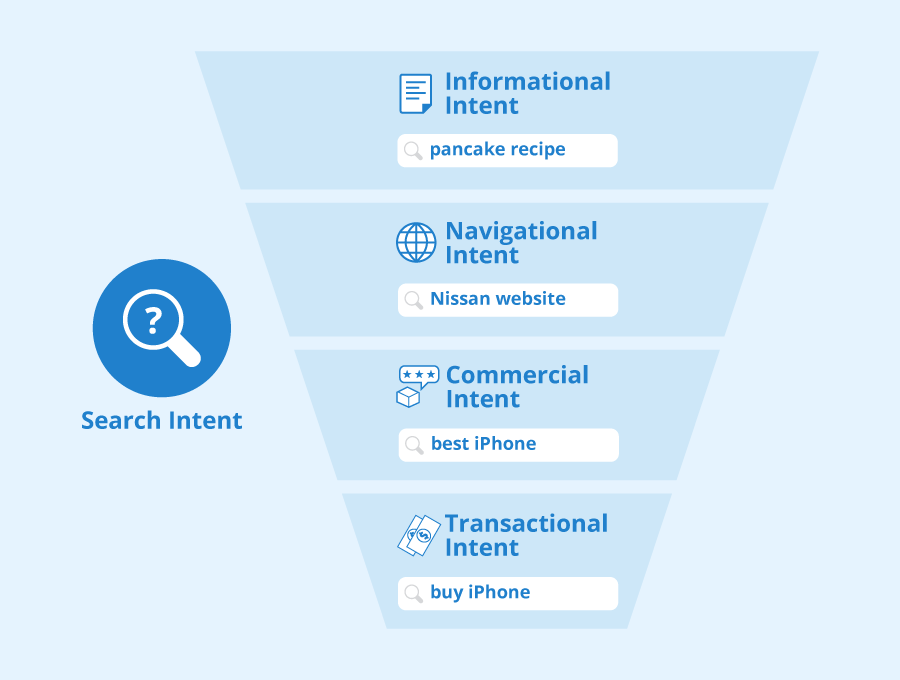
Search intent refers to the reason behind a user's search query - what they are looking to accomplish or find. It can be informational, navigational, transactional, or commercial.
Let's explore the three main types of search intent:
1. Informational: The user wants to learn something. Think "how to fix a flat tire" or "best vegan cake recipes."
2. Navigational: The user is looking for a specific website or page. Imagine searches like "best hotel in Dubai TripAdvisor" or "[Restaurant name] reviews Yelp"
3. Transactional: The user is ready to buy or take action. Examples include "buy noise-canceling headphones" or "book a hotel room in Paris."
Now, how does this translate to your content and design?
Informational Intent
- Content: Offer clear, concise explanations, step-by-step guides, and informative resources.
- Design: Prioritize readability with bullet points, headers, and visuals that support understanding.
Navigational Intent
- Content: Provide intuitive navigation and clear calls to action, guiding users directly to the desired page.
- Design: Emphasize familiar search elements like website logos, navigation bars, and clear buttons.
Transactional Intent
- Content: Highlight product features, showcase testimonials, and address potential concerns to build trust and encourage conversion.
- Design: Optimize the checkout process, use strong CTAs, and display trust signals like security badges.
By aligning your content and design with the underlying search intent, you create a targeted experience that resonates with your audience and fuels your SEO success.
Remember, it's not just about throwing keywords onto a page; it's about understanding the user's journey and designing a landing page that becomes the perfect pit stop on their way to satisfaction.
Add Information to Your Database
To generate pages using programmatic SEO, it's crucial to populate a database with all the data and information you want to include on your landing pages.
This database acts as a central repository from which your landing page template can pull relevant content dynamically.
Let's take TripAdvisor as an example to illustrate the various fields they likely have in their database:
1. Essential Information:
- Main Keyword: The core topic of each page (e.g., "hotels in Paris," "things to do in Rome").
- Modifiers: Descriptive details that refine search intent (e.g., "luxury hotels," "family-friendly activities," "historical sites").
- Location Data: Precise addresses, coordinates, and maps for accurate geo-targeting.
- Prices: Current room rates, tour costs, and admission fees to ensure up-to-date information.
2. Engaging Content:
- Descriptions: Detailed overviews of hotels, attractions, and experiences, captivating users with rich information.
- Reviews: User-generated insights from fellow travelers, adding authenticity and social proof.
- Photos: High-quality images that showcase destinations and facilities, visually enticing visitors.
3. Dynamic Page Elements:
- User Ratings: Star ratings and scores to highlight popular choices and build trust.
- Availability Information: Real-time updates on room availability and booking options, ensuring seamless user experience.
- Call to Actions: Clear buttons for booking, contacting, or exploring further, guiding users towards conversion.
4. Additional Insights:
- Seasonal Trends: Data on popular travel times and activities to tailor content and promotions accordingly.
- User Preferences: Information on user interests and past behavior to personalize recommendations and enhance engagement.
- Local Insights: Unique recommendations and tips from locals to offer authentic experiences and stand out from competitors.
Syncing the Database with Your Website
Once your database is brimming with valuable information, it's time to bridge the gap between it and your website.
This crucial step ensures your dynamic pages spring to life, seamlessly incorporating content and data to deliver exceptional user experiences.
Here are some powerful tools that can help you achieve this seamless integration:
1. Whalesync
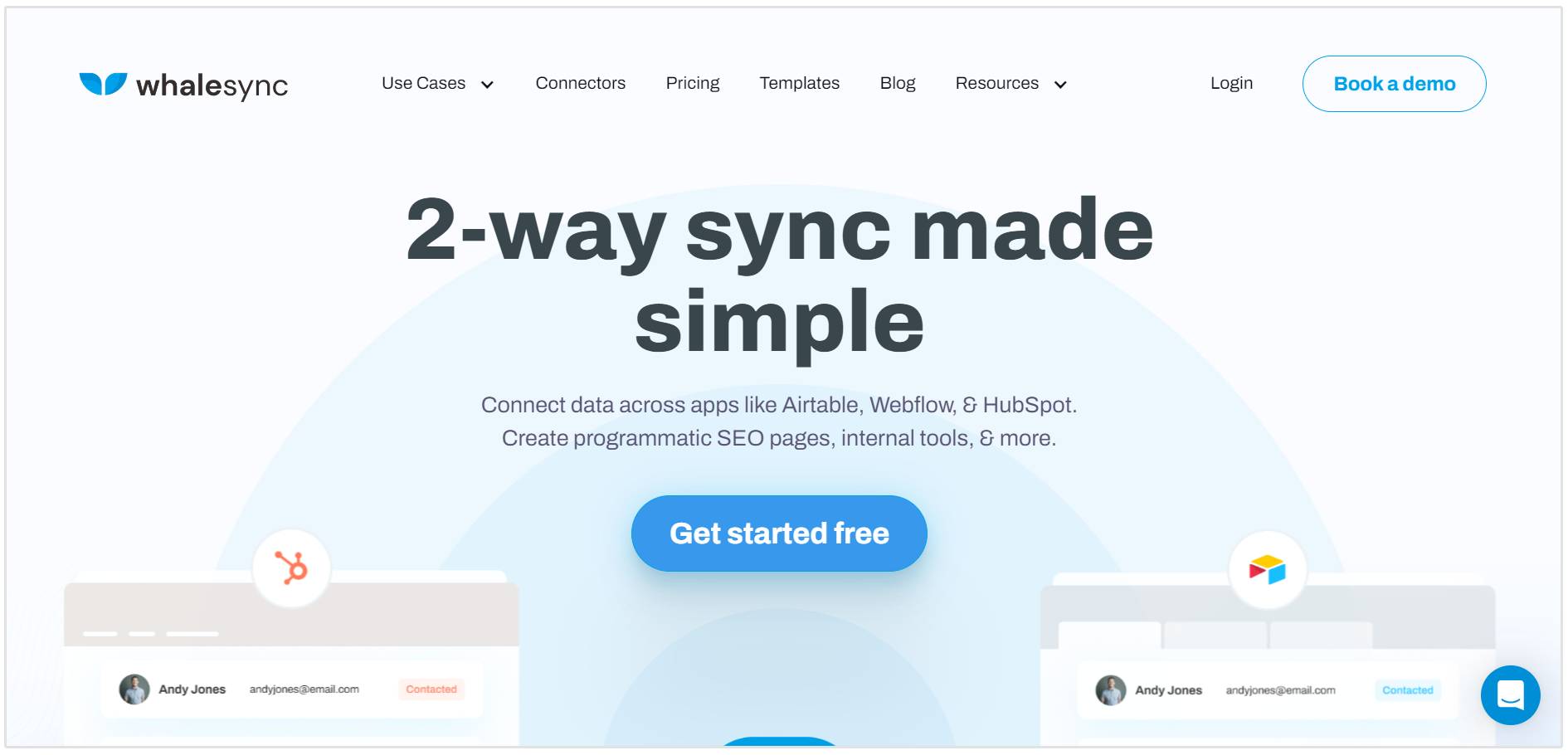
This versatile platform specializes in connecting databases like Airtable with content management systems like WordPress, Webflow, and Shopify.
It offers a user-friendly interface and robust features for syncing data, managing updates, and automating workflows.
2. Zapier

Known for its versatility in automating tasks across various apps, Zapier can also be harnessed for database-website synchronization.
It allows you to create custom workflows that trigger page creation or updates based on changes in your database.
3. Make
Similar to Zapier, Make offers a comprehensive platform for automating tasks and connecting different systems. It provides a visual builder for creating complex data flows and supports a wide range of integrations, including database-website synchronization.
4. Custom Solutions
If your website has unique requirements or you need full control over the integration, consider developing a custom solution using programming languages like Python, JavaScript, or PHP. This approach offers maximum flexibility but requires technical expertise.
5. CMS-Specific Plugins
Some content management systems have built-in plugins or extensions that facilitate database integration.
For example, WordPress offers plugins like WP All Import that enable importing data from various sources into custom post types.
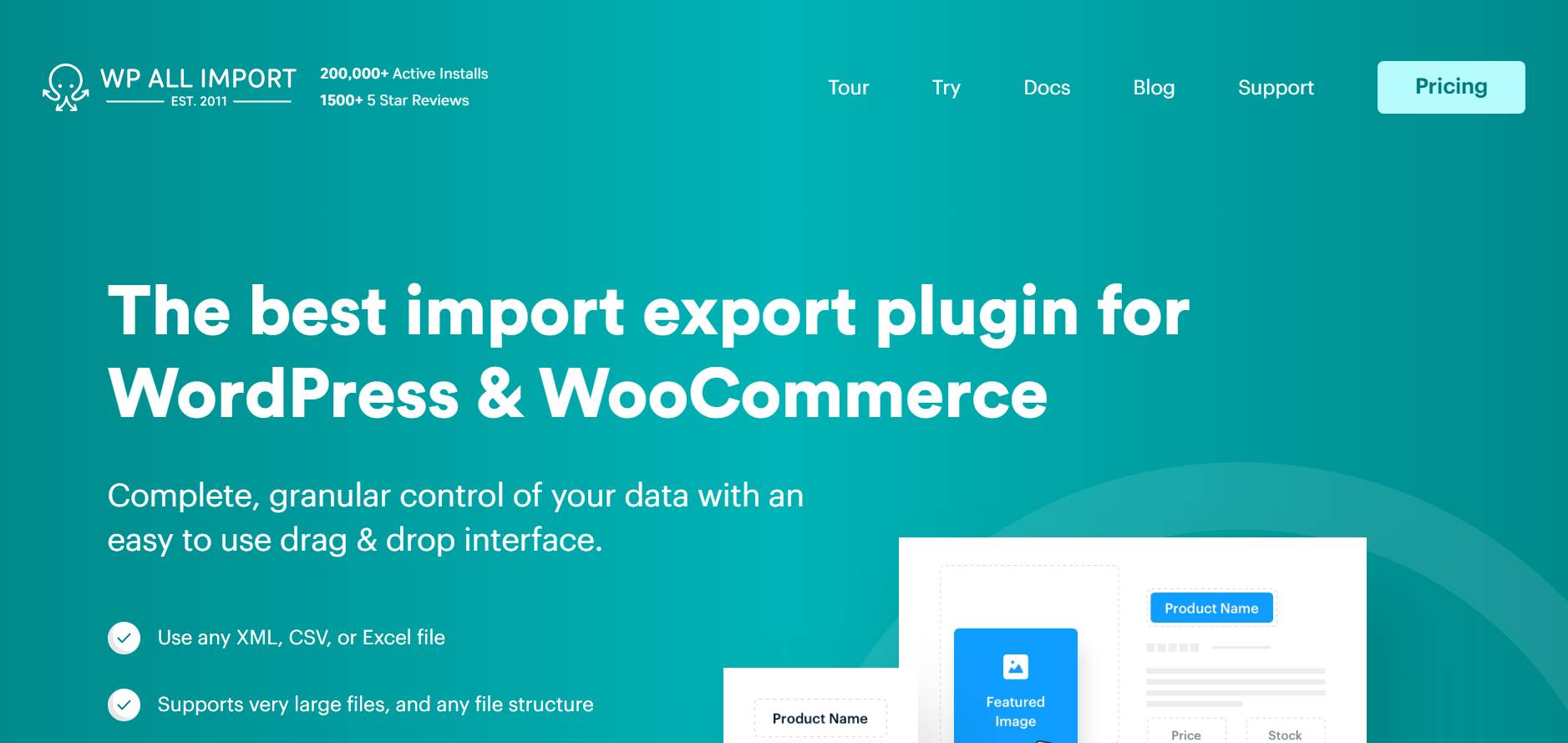
Factors to Consider When Choosing a Tool
- Ease of Use: Assess your team's technical expertise and choose a tool with an interface that aligns with their comfort level.
- Integration Capabilities: Ensure the tool seamlessly connects with your chosen database and website platforms.
- Feature Set: Evaluate the specific features you need, such as real-time syncing, content automation, or version control.
- Pricing: Explore pricing models to find a tool that fits within your budget.
- Scalability: If you anticipate significant growth in your data or website complexity, choose a tool that can handle increased volume and complexity.
By carefully selecting the right tool and implementing a robust synchronization process, you'll create a dynamic and efficient pipeline between your data and your website.
This empowers your programmatic SEO strategy to flourish, delivering highly relevant and engaging content to your audience at scale.
Conclusion
Programmatic SEO offers a powerful approach to optimizing websites for a vast array of long-tail keywords.
Ultimately, when employed strategically and complemented by effective data management, programmatic SEO can be a potent weapon in your digital marketing arsenal, driving significant traffic and propelling your website towards sustained online success.
